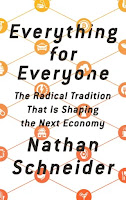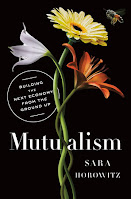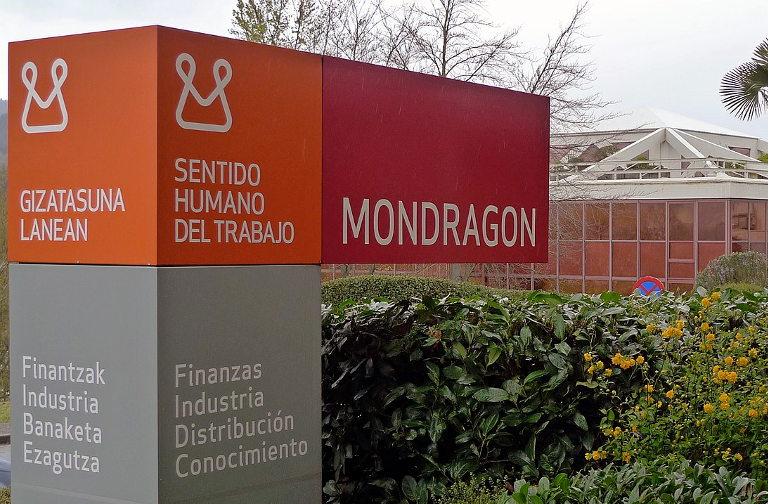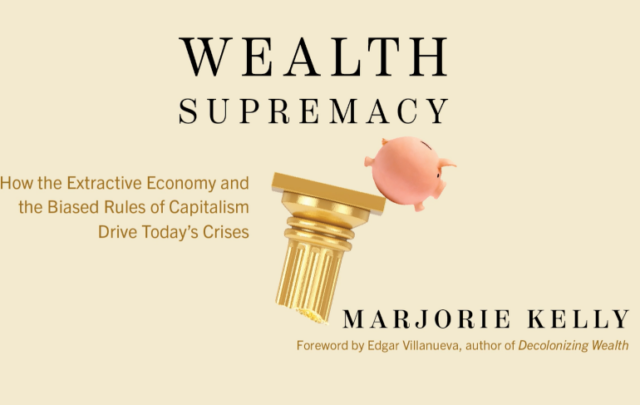[Cross-posted to Front Porch Republic]
If future historians wish to find some silver lining in COVID-19, the rise in mutualism in response to the shut-downs and dislocations it made necessary may be a good candidate. Community gardens, neighborhood associations, right-to-repair networks, business co-ops, crowd-sourcing approaches to providing health care and jobs and basic financial support: all increased in number and reach over the past 15 months, sometimes greatly. Examples can be found everywhere, from major American metropolises to small Welsh towns. To be sure, the pandemic has not transformed the American economy into a 21st-century version of Spain’s famed Mondragon (the worker cooperative founded by the Catholic priest José María Arizmendiarrietain in 1956 in accordance with the principle of solidarity, which has flourished and been much imitated ever since). Still, over the past year business advisory groups, scholars, and think tanks have more and more often embraced the local and the cooperative as crucial for charting a sustainable, post-pandemic path forward. Whether this burst of interest in mutualist economic alternatives will last remains to be seen–but at the very least, those who have long worked to build these alternatives ought to be feeling some gratification right now.
This shift hasn’t been solely the result of the pandemic, of course—more democratic and decentralized economic forms, and the arguments on behalf of such, have been achieving greater prominence for well over a decade now. This prominence has inspired some writers to look back, allowing those who have long been refining their communalist, mutualist, and cooperative alternatives a chance to make their case. Perhaps by studying these cases, and thereby adding to the foundation of this shift, we can strengthen it, or even encourage ourselves to get involved in these projects (or start our own!). But if that strengthening is to happen, it will require, I think, a clear sense of what these alternatives are premised upon, and how those premises prevent them from falling into centralized, capitalist ruts.
But before premises, some particulars: what is meant by mutualism and cooperativism, and why should they be understood as standing distinct from the usual capitalist routines of our economy? The simplest answer is that any organization of economic activity that has woven egalitarian and communitarian practices into their daily operations—whether in terms of ownership, production, decision-making, pricing, wage scales, distribution, or anything else—is, to one degree or another, pursuing a path which gives place to something other than profit-maximization and consumer-individuation, and thus is departing from the ideal capitalist form. That doesn’t mean that profit and consumption never matter to communes or co-ops or credit unions or anything else crowd-sourced; the human desires and pressures that give rise to markets can’t ever, and shouldn’t ever, be ignored. And by the same token, it’s not as though the capitalist form has ever existed anywhere solely as a pure ideal, without any concern for community or equality. The point to grasp is simply that mutualist economic alternatives emerge organically, democratically, as people confront the failures of the market and work out ways to change or improve or work around them. They are, by definition, works of compromise, though no less aspirational for all that.
Thus a “mutualist economic alternative” could be something as formal as a utopian commune, with people living and eating in the same buildings, satisfying their limited needs entirely through agrarian autarkic practices. Or it could be something as informal as a group of neighbors spread out over a few suburban blocks, who got to know each other through church or work or their kids’ school, who all share a single lawnmower, rotated according to a vaguely defined schedule, with everyone filling it up with gas when they finish using it. The pandemic may not have provided us with many more of the former, but much evidence suggests that the past 15 months (or, for that matter, the past 13 years), we’ve been seeing more and more of the latter. (The economist Juliet Schor noted this slowly emerging transformation–which she called the shift towards “plenitude”–over a decade ago.)
The one thing this enormous range of local and collective actions have in common is that they are all, as the late Marxist scholar Erik Olin Wright thoughtfully labeled then, “interstitial.” Wright links together religious monasteries, labor unions, Amish farming villages, employee-owned businesses, mutual aid associations, and many more, presenting them as all part of the distinctly non-revolutionary project of “eroding” (not smashing, even the most convinced socialist probably knows that this is and must remain a historical dead end, but rather resisting and taming and dismantling and escaping) capitalism. “We can get on with the business of building a new world, not from the ashes of the old, but within the interstices of the old” (How to be an Anti-Capitalist in the 21st Century [Verso, 2021], p. 63).
True, enlisting all co-ops, communes, credit unions and crowd-sourcing networks into a single “anti-capitalist” project is a harder sell for some than others. Consider two recent books, Nathan Schneider’s Everything for Everyone: The Radical Tradition That is Shaping the Next Economy and Sara Horowitz’s Mutualism: Building the Next Economy from the Ground Up. Both are excellent. They are also quite different, despite their shared, hopeful conviction that the “next economy” is going to be a more democratic, more social, more cooperative, and more mutual one, and despite essentially addressing a more or less identical range of alternative economic forms. Most importantly, though, they both show, in different ways, the difficulty, I think, of accepting the “project”-implications of what they describe.
 Schneider’s book is the more comprehensive of the two. Published in 2018, Schneider explores the whole economic and social history of people forming cooperative associations to access markets, share information and resources, and strengthen their communities. The book is full of insightful observations, beginning with the dual inspiration of Elinor Ostrom’s important work on how communities manage “common-pool resources” (key point: borders and enforcement mechanisms are essential) and the Roman Catholic catechetical teaching of “the universal destination of goods” (which means, among other things, that “private property is an aberration, though under the conditions of fallen human society…a necessary arrangement”—pp. 20-21, 23-24). This mix of the practical and the moral is exactly what those thinking about communitarian alternatives need, and it shapes Schneider’s engagement with cooperative groups, businesses, and organizations both locally and internationally. In following examples from Kenya to Colorado, his awareness of the precariousness of communal alternatives—the way they require both “a supportive, nourishing culture from below and enabling policy from on high” (p. 14)—is a constant, and that’s valuable, encouraging stuff.
Schneider’s book is the more comprehensive of the two. Published in 2018, Schneider explores the whole economic and social history of people forming cooperative associations to access markets, share information and resources, and strengthen their communities. The book is full of insightful observations, beginning with the dual inspiration of Elinor Ostrom’s important work on how communities manage “common-pool resources” (key point: borders and enforcement mechanisms are essential) and the Roman Catholic catechetical teaching of “the universal destination of goods” (which means, among other things, that “private property is an aberration, though under the conditions of fallen human society…a necessary arrangement”—pp. 20-21, 23-24). This mix of the practical and the moral is exactly what those thinking about communitarian alternatives need, and it shapes Schneider’s engagement with cooperative groups, businesses, and organizations both locally and internationally. In following examples from Kenya to Colorado, his awareness of the precariousness of communal alternatives—the way they require both “a supportive, nourishing culture from below and enabling policy from on high” (p. 14)—is a constant, and that’s valuable, encouraging stuff.
I wonder, though, about Schneider’s perspective on building cooperative alternatives to capitalism in today’s thoroughly globalized world. Given both his generation (he was born in the 1980s) and his vocation (he is a journalist and scholar of media studies), it is perhaps to be expected that Schneider would spend large part of his book discussing the (arguably entirely hypothetical) community-building potential of phone apps and crypto-currencies. While he is fully conscious of how “the lords of the cloud” will never allow the internet to become “an egalitarian commons of borderless, permissionless, peer-to-peer productivity,” he nonetheless appears ambivalent about attempts to reclaim the faded, real-world cooperative accomplishments (the grain elevators, the fisheries) of “sedentary peoples,” with he and his family instead being committed to “staying as nomadic as we can manage” (pp. 215-217). This is unfortunate, I think; it reflects a disengagement with place which leads Schneider to be more enamored of whatever he can designate as “half-socialist, half-libertarian”—really, anything that replaces government with “cooperative mechanisms” (pp. 185-188)—than perhaps he should be. The reality is that building sustainable alternatives must engage multiple levels of governance, taxation, and regulation—what he elsewhere wisely calls the “local, diverse, compromised legacies” of co-ops across the country and around the world—if they are going to have the social and economic power to maintain their ground. He is absolutely correct that “a generation gap divides the cooperative movement today” (pp. 232-233); it’s a gap that I think he recognizes his own place within, and one that I trust he will move out of, eventually.
 Horowitz’s book similarly makes use of history to make an argument for cooperative alternatives that is both practical and moral, but the history she makes use of is intensely personal, something Schneider’s writings could only invoke to a limited extent. Horowtiz’s frankly remarkable family history (her father was born in 1918, and worked closely with his own father in building up union power for garment makers and others in pre-New Deal days) allows her a perspective on the possibilities for mutualism which is much needed in America today. Far from encompassing a wide range of communalist endeavors, Horowitz sees mutualism as most obviously something built by those looking to establish the conditions under which they work under industrial capitalism—in other words, through the building of unions. While her history makes use of Marx, Proudhon, Tocqueville, and many others, the heart of her historical argument never really strays far from the way Roosevelt’s New Deal, through legislation like the National Labor Relations Act, legitimated and empowered the associational efforts of people like her grandfather and father, only later to see that power taken away. As she somewhat rhapsodically describes those years:
Horowitz’s book similarly makes use of history to make an argument for cooperative alternatives that is both practical and moral, but the history she makes use of is intensely personal, something Schneider’s writings could only invoke to a limited extent. Horowtiz’s frankly remarkable family history (her father was born in 1918, and worked closely with his own father in building up union power for garment makers and others in pre-New Deal days) allows her a perspective on the possibilities for mutualism which is much needed in America today. Far from encompassing a wide range of communalist endeavors, Horowitz sees mutualism as most obviously something built by those looking to establish the conditions under which they work under industrial capitalism—in other words, through the building of unions. While her history makes use of Marx, Proudhon, Tocqueville, and many others, the heart of her historical argument never really strays far from the way Roosevelt’s New Deal, through legislation like the National Labor Relations Act, legitimated and empowered the associational efforts of people like her grandfather and father, only later to see that power taken away. As she somewhat rhapsodically describes those years:
[T]he success of Roosevelt’s top-down approach to social change via government programs created the sweeping national initiatives—the Civilian Conservation Corps, the Works Progress Administration, and so on—that we associate with the New Deal today….But I see another important element to the story. Roosevelt recognize the limits of what government could accomplish on its own….Rather than build new institutions from scratch, he looked at the ecosystem of mutualist organizations that already existed and realized that unions were the perfect tools to find workers where they already were….[The New Deal] would enshrine, protect, define, and bolster the labor movement, and in particular the strategy of industrial unionism. Whereas before…organized labor had been a diverse and idiosyncratic mutualist movement that was constantly experimenting….Roosevelt had in effect given unions a “job” in the post-New Deal economy. By putting a legal structure around the right to collectively bargain, Roosevelt had given unions a mandate–to bargain for higher wages–while also giving their economic model a regulatory backdrop….The New Deal created the business model that let unions thrive through the middle of the twentieth century (pp. 150-152).
Horowitz is not a labor historian, and there are many that might dispute the mutualist sympathies she sees embedded in that legislation. Still, her perspective–as the child and grandchild of labor organizers, she has an intimate understanding of the pre-political, associational, communal histories of diverse workers striving to carve out for themselves a place in late 19th– and early 20th-century industrial America–should be taken seriously. In fact her tale, and the way she extends it into such practical matters of raising capital and establishing revenue streams to support mutualist organizations, probably captures the point of Schneider’s observation about alternatives to capitalism requiring both a supportive culture below and enabling policy above better than any story he actually shared in his own book.
Like many others who succeed in building alternatives, though, Horowitz tends to see her particular alternative as a singular, necessary answer. A life-long contract worker, who founded the Freelancers Union and the Freelancers Insurance Company, she is quick to take decentralization to an extreme: “We live in a decentralized economy, and the next safety net will be no less decentralized” (p. 45). Her contempt for a Democratic party whose demographic base today is mostly disconnected from unionization and prefers national, redistributive solutions instead isn’t as great as her contempt for a Republican party which has consistently worked to undermine union power…but it is pretty great nonetheless. (Her story of how the FIC found itself discriminated against by President Obama’s Affordable Care Act is one every reformer should read.) Her insistence that “[t]here’s no reason that proposals for nationalized health care can’t co-exist with mutualism, but mutualist organizations themselves—unions, cooperatives, mutual aid societies, faith communities—are uniquely position to be the delivery mechanism for that care” (p. 191) makes obvious sense…until one remembers that she is essentially describing Canadian Medicare with their Local Health Integration Networks, and now here come the (basically accurate, I would say) accusations of “socialism” again, which Horowitz insists–wrongly, I have to say–“couldn’t be more different” from her mutualist approach (p. 49). It would be interesting to know if Horowitz imagines a mutualist potential embedded in President Biden’s American Rescue Plan Act, and if she doesn’t, where exactly she thinks difference between Biden’s ambitious and Roosevelt’s actually lay.
These kinds of arguments–which really come down to what kind of “project” one is willing or unwilling to see one’s alternative aspirations to encompass–all turn on the degree to which one understands these efforts in terms of people as opposed to ideas, and it is here where a return to Mondragon is helpful. Both Schneider and Horowitz dedicate part of their book to the aforementioned Mondragon Corporation, and it is worth considering its example as an important complement–and perhaps correction–to some of their insights. Father Arizmendiarrieta, universally known as “Arizmendi,” arrived in the Mondragon Valley of the Basque region of Spain in 1941 and began to teach, with an emphasis on vocational skills and cooperative techniques, with the aim of building up the collective wealth and the sense of solidarity within his community. When he established, along with five graduates of the school he’d established, the first Mondragon co-op, manufacturing paraffin burners, his goal was–and remains for the next 20 years, until his death in 1976–to change lives by changing, cooperatively and mutually, the economic conditions within which those lives were lived.
“The interesting and key thing,” he wrote, “is not the cooperatives, but the cooperators. Likewise, it is not democracy, but democrats. Not so much ideas as life experiences.”
Since his death, Mondragon has expanded internationally, moving into multiple areas of manufacturing, retail, and finance, with its mutualist and cooperative principles mostly holding firm. For example, to enable to genuine mutual feeling between workers and managers, wage differences are tightly controlled, with the democratically chosen directors of different Mondragon cooperatives earning wages no greater than 9 times that of the lowest-paid worker in the firm, with the usual difference being held to 5-1. Unsurprising, many socialist thinker—including Wright—have seen this successful commercial venture, the seventh wealthiest company in Spain in terms of assets, as a vital anti-capitalist model for others as well.
 Whether it is or not will be argued about for as long as the terms themselves are debated. But whatever its correct description, it is unfortunate that Arizmendi’s collected Reflections—the which are only now finally being made available in English thanks to a translation project spear-headed by Solidarity Hall—weren’t available to either of the authors discussed here, or so many others who strive to hold build communalist or mutualist or cooperative economic alternatives. (Though Schneider provides a forward to the Solidarity Hall publication.) Arizmendi and those who followed him have negotiated, experimented, tapped local resources, lobbied national parties, and appealed to international bodies; they have, in short, truly lived out Arizmendi’s profoundly pluralistic vision of cooperative empowerment. In the end, if the goal is worker empowerment, community solidarity, and Christian love, then focus first on the person, and who cares what ideological category such a personalist focus falls under? The radical possibilities of disparate alternatives which emerge over time and experimentation must not be disregarded just because they seem to challenge accepted patterns of economic behavior, whether left or right:
Whether it is or not will be argued about for as long as the terms themselves are debated. But whatever its correct description, it is unfortunate that Arizmendi’s collected Reflections—the which are only now finally being made available in English thanks to a translation project spear-headed by Solidarity Hall—weren’t available to either of the authors discussed here, or so many others who strive to hold build communalist or mutualist or cooperative economic alternatives. (Though Schneider provides a forward to the Solidarity Hall publication.) Arizmendi and those who followed him have negotiated, experimented, tapped local resources, lobbied national parties, and appealed to international bodies; they have, in short, truly lived out Arizmendi’s profoundly pluralistic vision of cooperative empowerment. In the end, if the goal is worker empowerment, community solidarity, and Christian love, then focus first on the person, and who cares what ideological category such a personalist focus falls under? The radical possibilities of disparate alternatives which emerge over time and experimentation must not be disregarded just because they seem to challenge accepted patterns of economic behavior, whether left or right:
Our cooperatives must primarily serve those who wish them to be bulwarks of social justice, and not those who see cooperatives as refuges or safe spaces for their conservative inclinations….We cooperators have in our minds the idea that the future society will probably have to be pluralist in all aspects, including economics: the state and the private sector, the market and the planned economy, various entities, be they paternalistic, capitalist, or socialist, will be combined and coordinated. If we really believe in and love people, their freedom, justice and democracy, we will need to treat each situation, the nature of each activity, the level of evolution and development of each community, on the basis of an approach that is overarching but not exclusive (Arizmendi, Reflections, p. 100).
Popular discourse in the United States today—as well as in many places around the world—hasn’t been so open to alternatives to the liberal capitalist mainstream for close to a century. Partly this is a result of the economic catastrophes of recent years: the beginnings of the Great Recession 13 years ago, and of course the consequences of COVID-19 pandemic, beginning last spring. But it is also the result of political leaders who have been willing to forthrightly identify themselves with different forms and degrees of anti-capitalism, and even more so it is the result thousands of people–both those who have labored, locally and collectively, over decades to hold on to and to share the resources their communities and vocations and places have brought to them, as well as those who are attempting, for reasons of both curiosity and desperation, to rediscover these mutualist, communalist, and cooperativist possibilities today. Being clear on the levels involved in building and recovering such practices, and being willing to embrace their sometimes discomforting ideological plurality and breadth, will be essential for anyone who hopes, in the neighborhoods and churches and communities, to do their part. Schneider’s and Horowitz’s books provide some excellent perspective and guidance, and I strongly recommend them. But I also recommend contacting and learning from those who are doing this collective, cooperative work, whatever they may call it, wherever they may be. Whatever such hands-on learning involves and whatever ways it is described, Arizmendi would be proud.
Teaser photo credit: By Colaborativa dot eu from Córdoba, Spain – Viaje a la Corporación Mondragón en el País Vasco, CC BY 2.0, https://commons.wikimedia.org/w/index.php?curid=53779508





